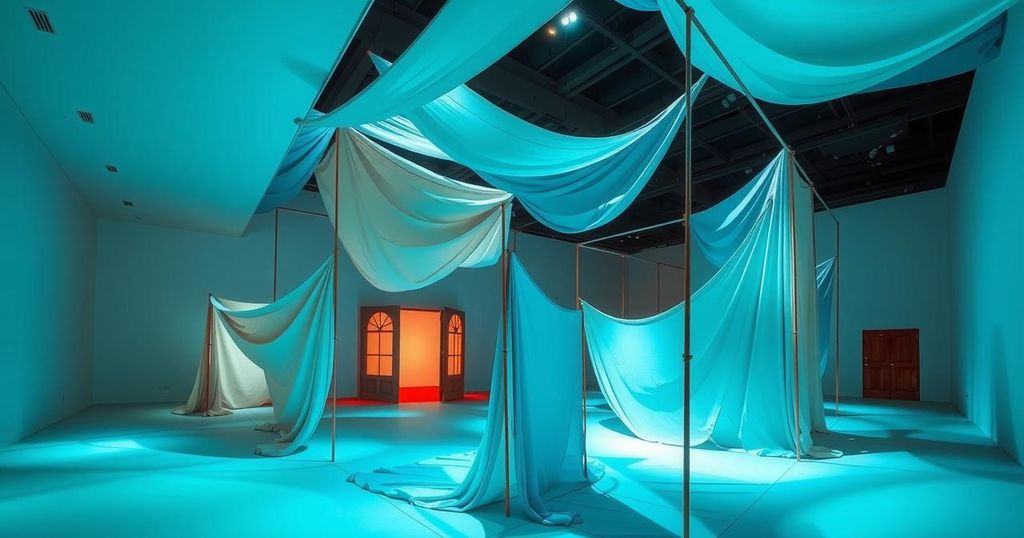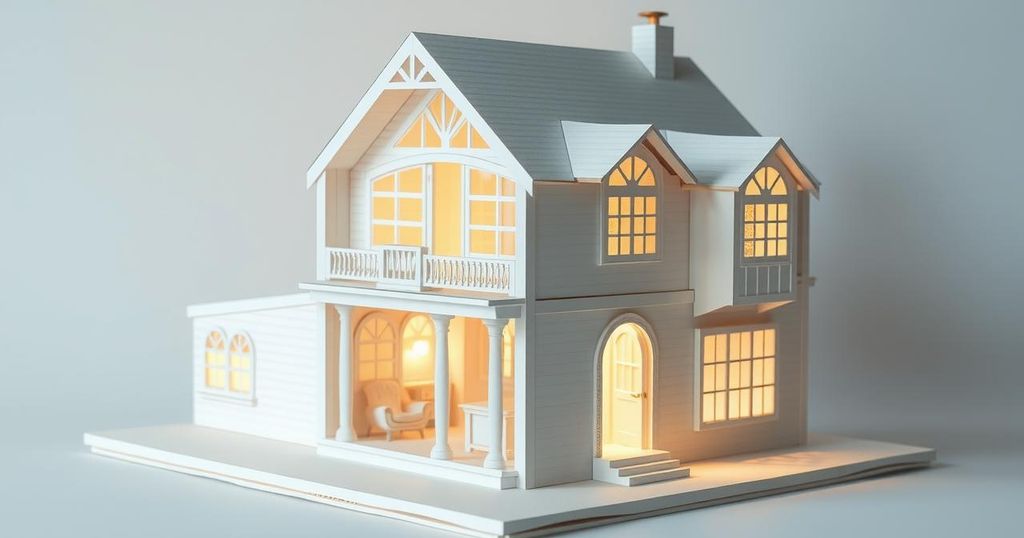Do Ho Suh’s exhibition at Tate Modern, featuring 30 years of work, delves into themes of memory and migration. Highlights include a paper replica of his childhood home and interactive installations. The show critiques the elusive idea of a perfect home while addressing broader social contexts of displacement and identity. Tight spacing poses challenges for piece appreciation.
Do Ho Suh’s latest exhibition at Tate Modern dives deep into memory, migration, and the idea of home. The South Korean artist, known globally for his intricate fabric sculptures and architectural themes, is showcasing three decades of his work, including newly created pieces specifically for this setting. This exhibition marks a significant moment for Suh, since he is currently residing in London.
The journey starts with the “Rubbing/Loving Project: Seoul Home (2013–2022),” an elaborate paper replica of Suh’s childhood house in Korea. Each detail of this traditional hanok is captured through traditional rubbing techniques, from walls to fixtures, resulting in a structure that feels both tangible and ghostly. It’s more than architecture—it’s the very essence of lived experiences, rendered in fragile materials like graphite and fibre.
As viewers move through the show, they encounter “Nest/s (2025),” which invites them to wander through bright, interconnected rooms. These translucent spaces come alive as people explore, echoing the notion of memory and how it shapes our surroundings. This leads visitors to “Perfect Home: London, Horsham, New York, Berlin, Providence, Seoul (2024),” a striking life-size outline of Suh’s current dwelling filled with objects from various places he has called home, revealing a layered, often confusing map of his life.
Suh explores the concept of a perfect home as something elusive, suggesting it’s a mere illusion. His fascination with graphs and mapping is evident in the “Bridge Project,” which looks at broader themes of global connection. It envisions a bridge linking cities where he’s lived—Seoul, New York, London—with its midpoint in the Arctic Ocean. This area, claimed by no one but threatened by all, embodies climate anxieties and systemic histories. Suh argues that the perfect home is inherently flawed, questioning our fixed identities and borders.
While Suh’s artworks—spanning drawings, installations, and films—are striking, the exhibition space itself feels cramped. The pieces are closely packed together, leaving one wishing for more room to absorb and reflect on them. This tight arrangement somewhat dilutes the intimacy of his practice but does not overshadow Suh’s powerful message. In a time when migration and changing borders are urgent issues, his work articulates the home as both a personal and political space, blurring the line between the private and the public, and the past and the present. His reconstructions of past homes, beautifully crafted with fabric and paper, capture complex emotions tied to displacement and adaptation.
Do Ho Suh’s exhibition at Tate Modern provides a rich exploration of memory and home through various artistic forms. His use of familiar domestic items alongside grand themes about migration and belonging offers a striking commentary on personal and collective identities. While the display’s layout may leave some pieces feeling confined, the core message resonates powerfully: the idea of a perfect home is fundamentally an illusion.
Original Source: www.timeout.com






